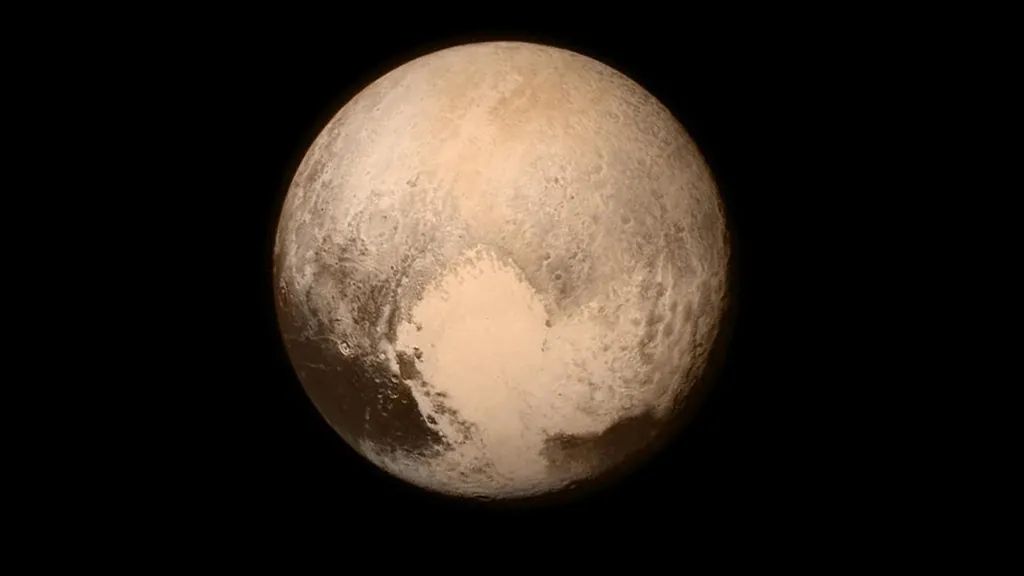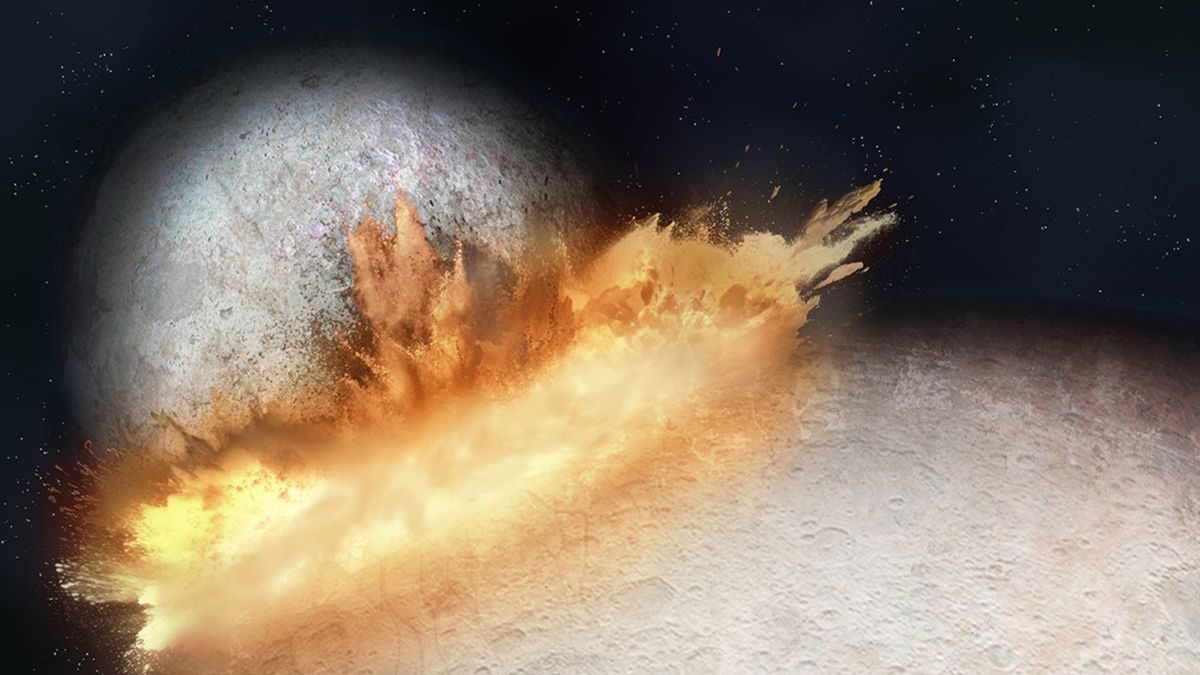When NASA's New Horizons spacecraft flew by Pluto in 2015, it returned images with a sweet surprise: a heart-shaped formation dominating the surface of the dwarf planet.
Now, researchers believe they've uncovered the origin of this cosmic Valentine.
The heart, they report today (April 15) in the journal Nature Astronomy, was formed in a slow-motion, glancing collision with an icy rock wider than Kansas is long.
The researchers determined this scenario by using computer models to simulate the impacts on Pluto's surface and the resulting formations.
Pluto's heart, scientifically known as Tombaugh Regio, gets its light coloration from nitrogen ice.
Source
Now, researchers believe they've uncovered the origin of this cosmic Valentine.
The heart, they report today (April 15) in the journal Nature Astronomy, was formed in a slow-motion, glancing collision with an icy rock wider than Kansas is long.
The researchers determined this scenario by using computer models to simulate the impacts on Pluto's surface and the resulting formations.
Pluto's heart, scientifically known as Tombaugh Regio, gets its light coloration from nitrogen ice.
Source























